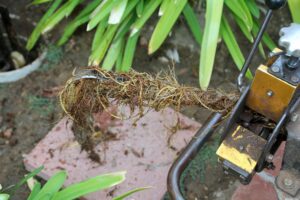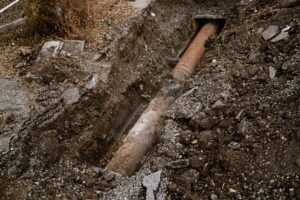Plumbing issues can happen for any number of reasons, from clogs, blockages, and damages to just plain poor pipe maintenance. One other common reason for plumbing issues most people aren’t aware of is tree roots growing inside sewer lines. Yes, you’ve read that correctly. You’re now probably wondering, “how does that even happen?”
Tree Roots Grow Towards Source of Water and Nutrients

There are a number of circumstances that can easily attract tree roots to a sewer pipeline. One such circumstance is a loose joint in the sewer line. Another major reason tree roots are attracted to sewer lines are cracks in the sewer line pipe itself, resulting in a leakage of water. A tree within 20 meters of a leaking sewer line will be immediately drawn to it, and its roots will grow in the direction of the leak to obtain its water supply.
How Tree Roots Impact Sewer Line Pipes
One common cause of cracks in sewer line pipes is age, especially if they are constructed out of concrete or clay. While today’s building codes no longer approve of sewer lines to be constructed out of clay or concrete, this isn’t true of facilities that were built in the decades prior to the 1990s. Since clay and concrete weaken with age, they stop being efficient after a decade or two and weaken. Over time, the structure erodes and cracks begin to emerge, leading to water leakages, which then attract tree roots.
Since tree roots are drawn to sources of water and other nutrients they need to survive, they will grow in the direction of these sources, and sewer lines are no exception. Once they penetrate a crack in the pipe, the tree roots then invade the pipe, grow, and expand over time, which creates blockages and other damages to the pipe. These blockages prevent excreta, toilet paper, tampons and other biodegradable objects flushed down the toilet from passing through, which can result in total pipe blockage. When it gets to this point, toilets that use the affected pipe are rendered useless.
Treatments For Tree Roots Growing Inside Sewer Lines

To prevent further damage to a sewer line, there are several methods for killing tree roots that can be employed. The first is to obviously call an experienced licensed plumber to inspect the sewer line and fix the problem professionally. Other methods that can be used until a plumber arrives include copper sulfate, foaming root killers, and rock salt.
If using copper sulfate, simply purchase some from the local hardware store and pour half a cup down the toilet and flush until it’s washed off. Copper sulfate works by being absorbed by the tree roots, which then poisons the tree roots without harming the rest of the tree. While copper sulfate is highly effective at clearing up sewer lines, it is also toxic to people and animals, and can cause nausea and vomiting if ingested. In large amounts, copper sulfate can damage red blood cells, the liver, and kidneys, and in extreme cases, even cause death. If going with copper sulfate for unclogging the sewer line, be sure to do so when there are no children or pets present.
A safer alternative to copper sulfate is rock salt, which can also be purchased at a local store. Like with copper sulfate, all that’s required is for the rock salt to be poured into the toilet bowl and flushed until the rock salt is gone. However, unlike copper sulfate (which only requires half a cup), rock salt is only effective in abundance. As such, 2 pounds of rock salt needs to be flushed down the toilet and the toilet itself cannot be used for 12 hours as salt works by dehydrating the tree roots. After 12 hours, the sewer line should no longer be blocked.
A third alternative to using copper sulfate and rock salt is foaming root killer. In contrast with the first two, foaming root killer is designed to remove tree roots from sewer lines specifically. When poured into the toilet bowl, root killer powder foams as it comes into contact with water. After it’s flushed, the foam’s active ingredient, dichlobenil, blocks root regrowth by condensing clay and other organic material.
While all three methods are effective at removing tree roots from sewer lines, it’s important to note, however, that none of these methods will repair the damages made to the pipe itself. Repairs to damaged pipes will need to be handled by a licensed plumber.
Preventing Tree Roots From Growing Inside Sewer Lines
After taking care of tree roots in your sewer line, the next step is to prevent future tree roots from invading the newly restored pipe. There are at least three different ways this can be achieved: the first is to inspect drains frequently by a licensed plumber. This can be done quarterly, twice a year, or even once every year. However often you choose to get your drains inspected, the point is the sooner tree roots are detected, the sooner they can be removed before they become a bigger problem. A licensed plumber will use specialized cameras to inspect the pipe for obstructions.
If living in an old house built prior to 1990, another preventive measure is to replace old sewer lines with ones that conform to modern building codes; preferably plastic or steel pipes as they are the most resistant to corrosion. Additionally, if thinking about planting any trees in your yard, it’s important to know the pipe layout of your neighborhood to know where to strategically plant the tree. Any area that doesn’t come within 20 meters of a sewer line is a sweet spot for tree growing. Calling 811 to learn about your neighborhood’s utility layout is a good place to start.
